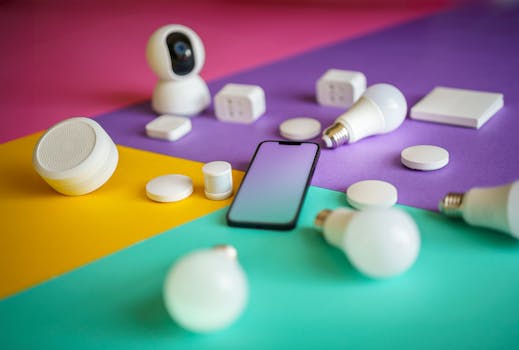
Smart Connectivity: The Role of IoT in Modern Communication
Smart Connectivity: The Role of IoT in Modern Communication has become a vital aspect of our daily lives. The Internet of Things (IoT) has revolutionized the way we communicate, making smart connectivity a reality. IoT refers to the network of physical devices, vehicles, home appliances, and other items that are embedded with sensors, software, and connectivity, allowing them to collect and exchange data. This technology has transformed the way we interact with each other and with devices, enabling seamless communication and unparalleled convenience.
The concept of smart connectivity is based on the idea of creating a network of interconnected devices that can communicate with each other and with humans. This network enables the exchange of data, which can be used to improve various aspects of our lives, such as healthcare, transportation, and energy management. Smart connectivity has numerous applications, including smart homes, smart cities, and industrial automation.
The Impact of IoT on Modern Communication
The impact of IoT on modern communication has been significant. With the advent of IoT, communication has become more efficient, convenient, and accessible. IoT devices can communicate with each other and with humans, enabling real-time data exchange and feedback. This has enabled the development of various applications, such as remote monitoring, predictive maintenance, and smart energy management.
IoT has also enabled the development of wearable devices, such as smartwatches and fitness trackers, which can track our health and fitness metrics. These devices can communicate with our smartphones and other devices, enabling us to receive notifications, track our progress, and set goals. The use of IoT in healthcare has also improved patient care, enabling remote monitoring and personalized treatment.
Applications of Smart Connectivity
Smart connectivity has numerous applications across various industries. In the healthcare sector, IoT devices can be used to monitor patient health, track medical equipment, and enable remote consultations. In the transportation sector, IoT devices can be used to monitor vehicle performance, track routes, and enable autonomous vehicles.
In the energy sector, IoT devices can be used to monitor energy consumption, optimize energy distribution, and enable smart grids. In the industrial sector, IoT devices can be used to monitor equipment performance, predict maintenance, and optimize production processes. The applications of smart connectivity are diverse and continue to expand as the technology evolves.
Challenges and Limitations of Smart Connectivity
While smart connectivity has numerous benefits, it also poses several challenges and limitations. One of the major concerns is security, as IoT devices can be vulnerable to cyber attacks and data breaches. The lack of standardization and interoperability between devices can also limit the effectiveness of smart connectivity.
Additionally, the use of IoT devices can raise concerns about privacy, as these devices can collect and transmit sensitive data. The dependency on internet connectivity can also limit the use of IoT devices in areas with poor or no internet coverage. Addressing these challenges and limitations is crucial to realizing the full potential of smart connectivity.
Conclusion
In conclusion, Smart Connectivity: The Role of IoT in Modern Communication is a revolutionary technology that has transformed the way we communicate and interact with devices. The applications of smart connectivity are diverse and continue to expand, enabling improved efficiency, convenience, and accessibility. While there are challenges and limitations to be addressed, the benefits of smart connectivity make it an essential aspect of modern communication.




